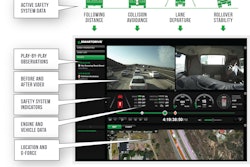Today’s sophisticated vehicle systems receive the lion’s share of attention, and while some of those high-maintenance items can be aggravating when they fail, the vehicle still might remain operable to some degree.
If a truck runs out of diesel exhaust fluid, an irate driver can limp along the highway, eventually getting to a truck stop and refilling the DEF tank. But if a relatively low-tech belt or hose goes, that driver isn’t going anywhere until a tow truck or technician arrives.
Overlooking belts and hoses is an invitation to disaster. Most fleets target them as part of scheduled preventive maintenance, and good technicians know to change out belts or hoses if even a hint of trouble is spotted.
But truck engines are hellish environments, and good maintenance is no guarantee against premature failure. A fleet’s best defense is coaching drivers to target belts and hoses during pre-trip inspections to spot potential problems before they become service failures.
How to inspect hoses
Compared to the chemistry set required to test a truck’s coolant mix, checking the hoses and fittings in the cooling system is a relative snap. The primary diagnostic tools are with a driver all the time: his hands.
“Coolant hoses degrade from the inside out,” says Frank Burrow, manager of warranty and customer support at Red Dot, a supplier of A/C systems and components for heavy-duty vehicles and off-highway equipment. “At a glance, there’s rarely an obvious sign of wear and tear. Palpating a coolant hose is one of the simplest ways to gauge its condition.”









